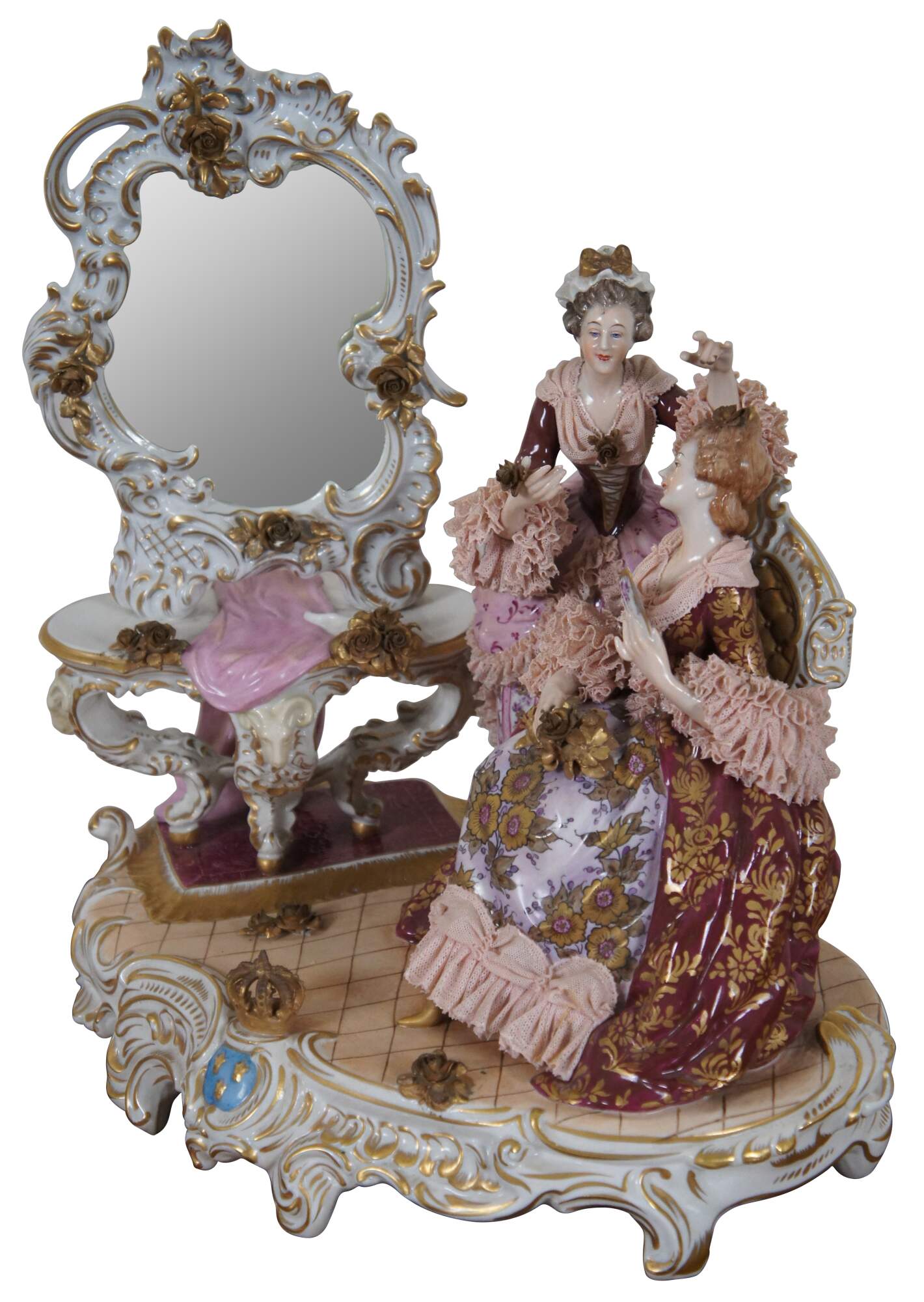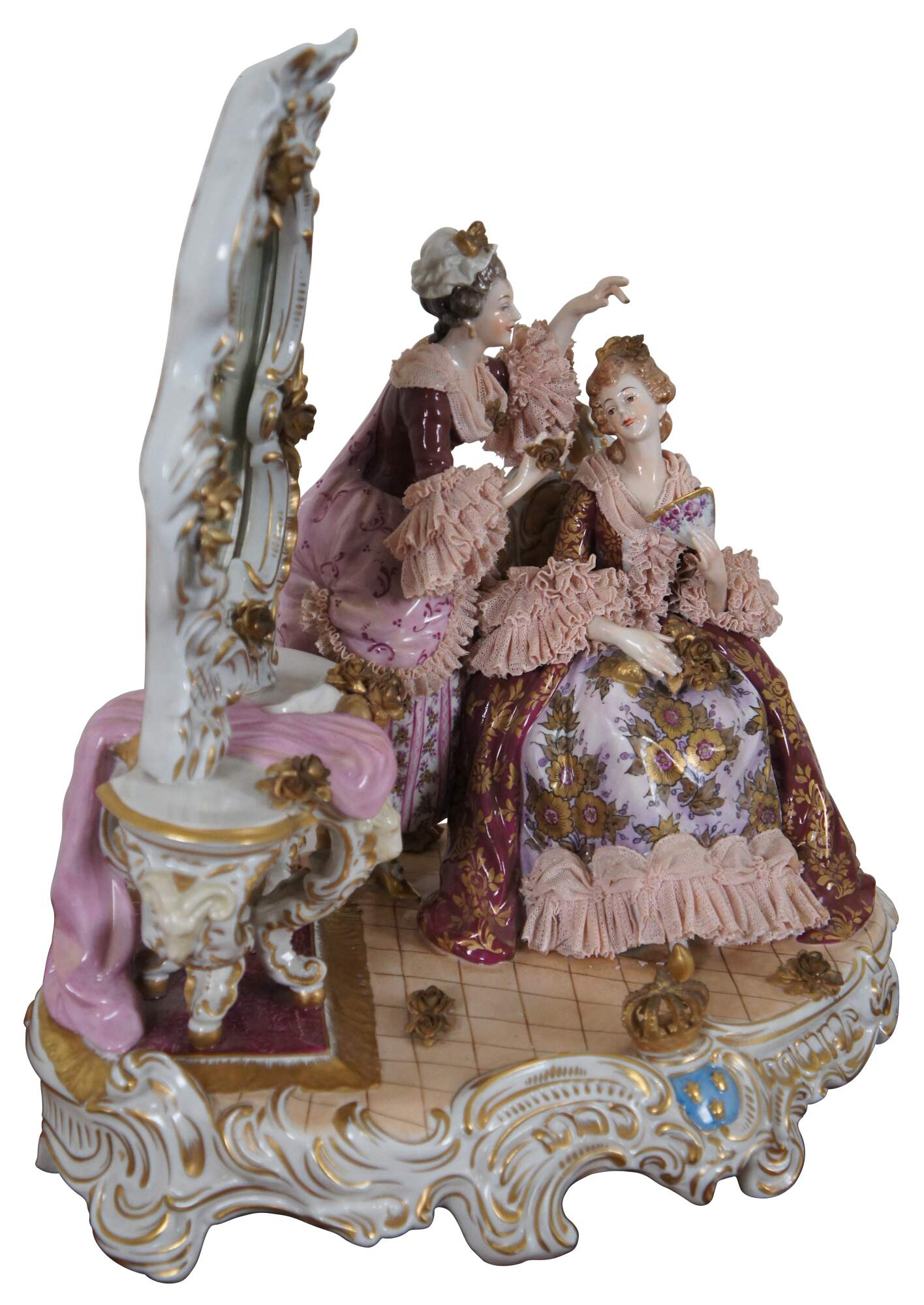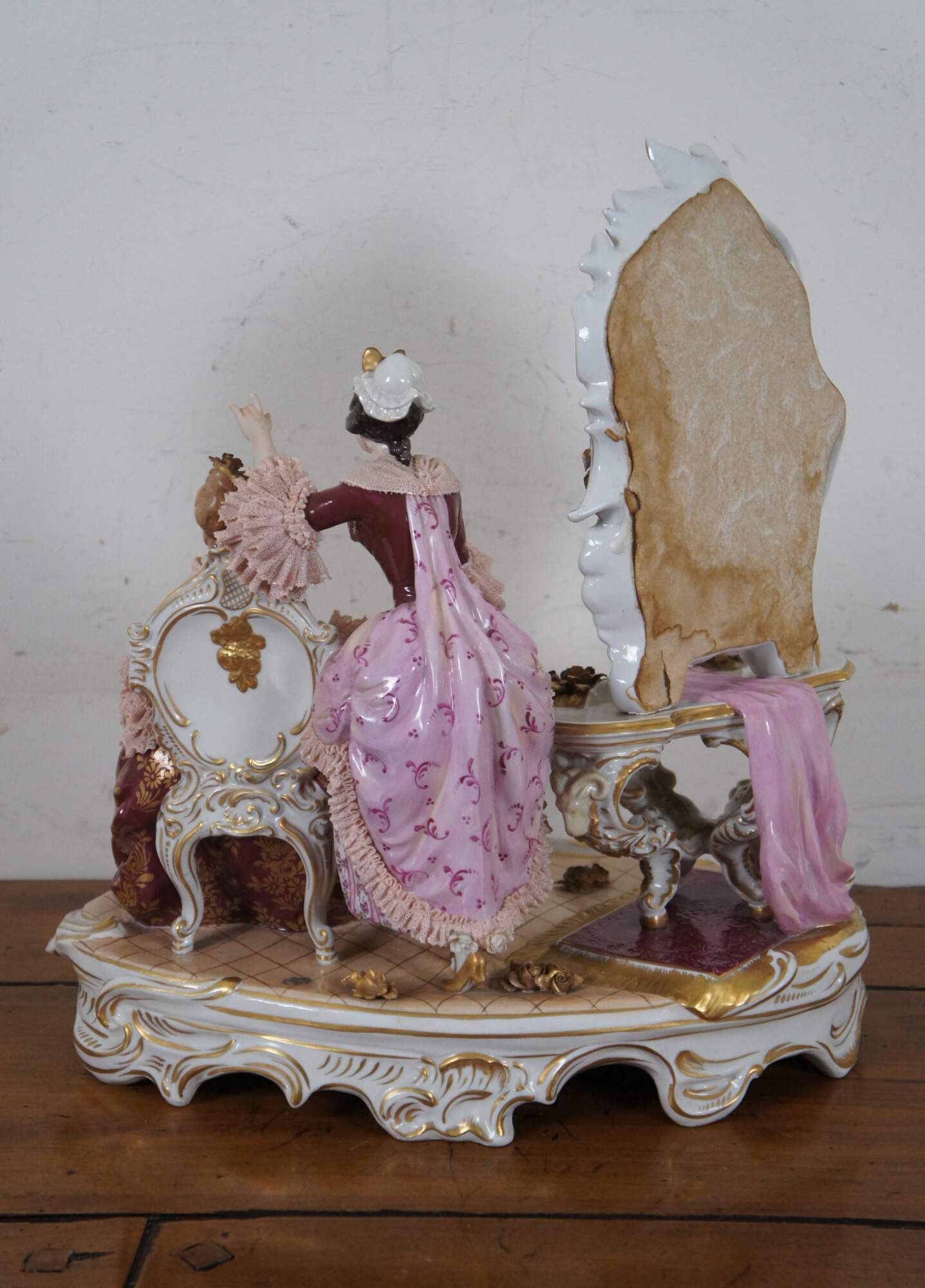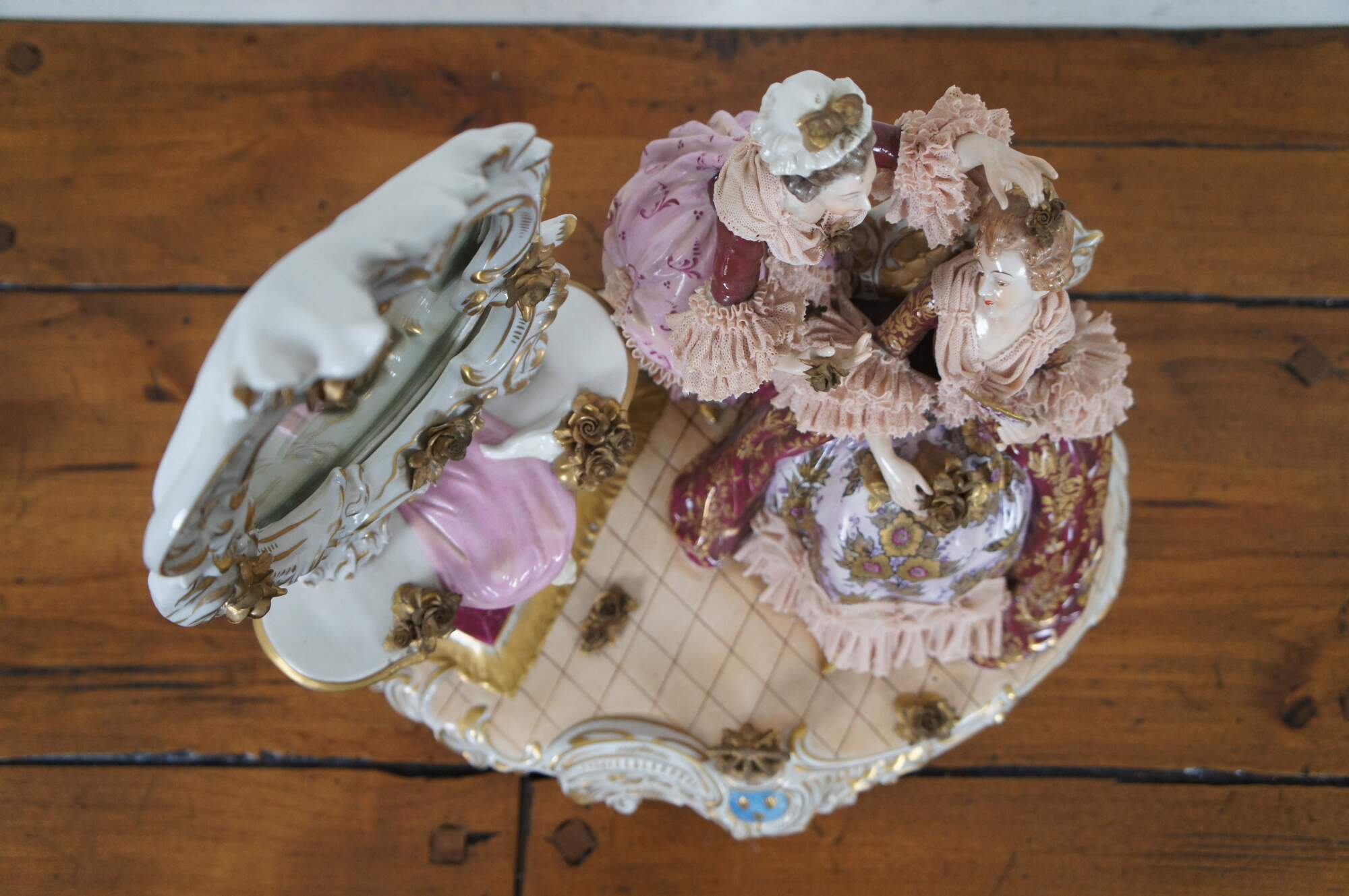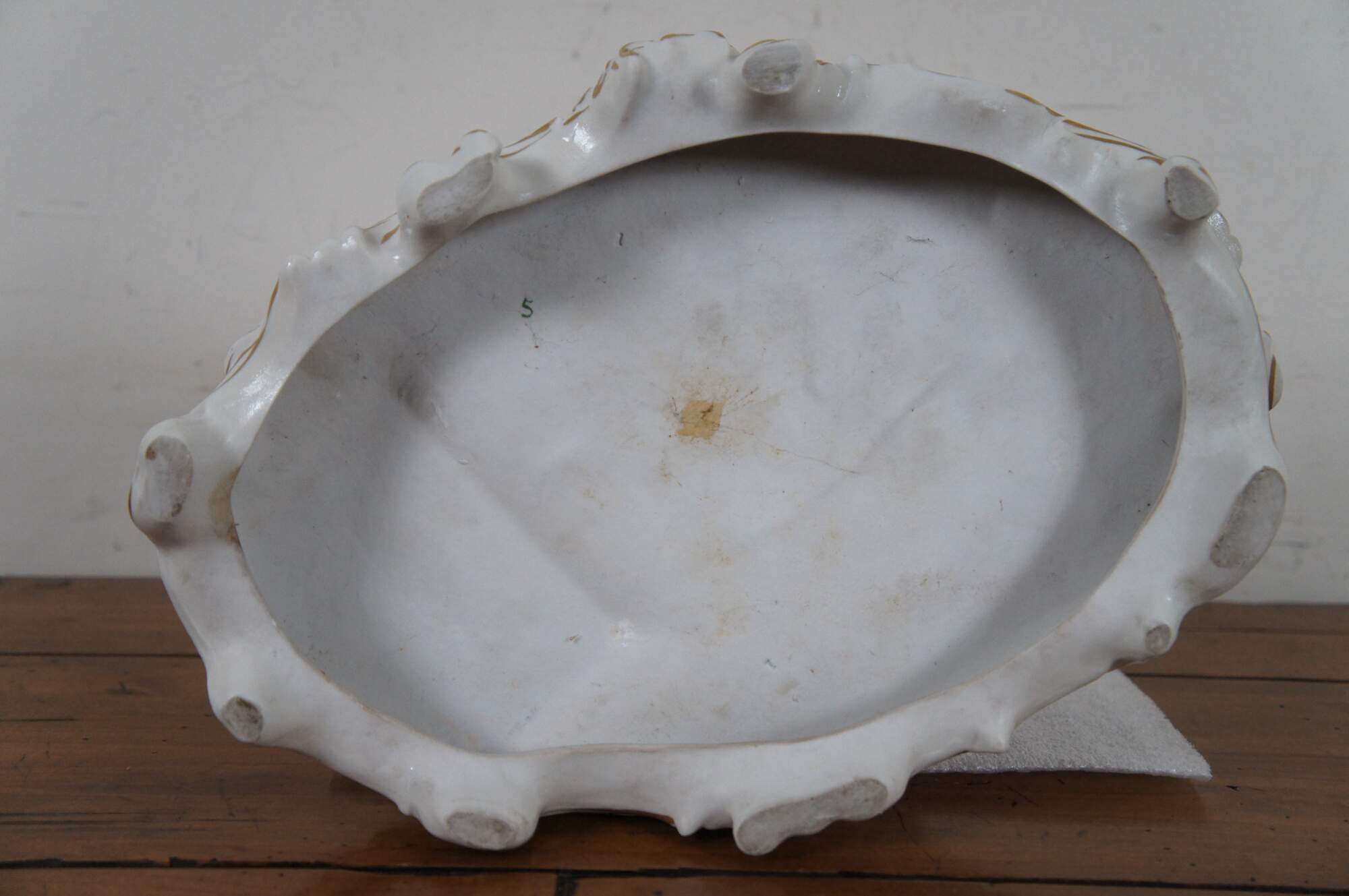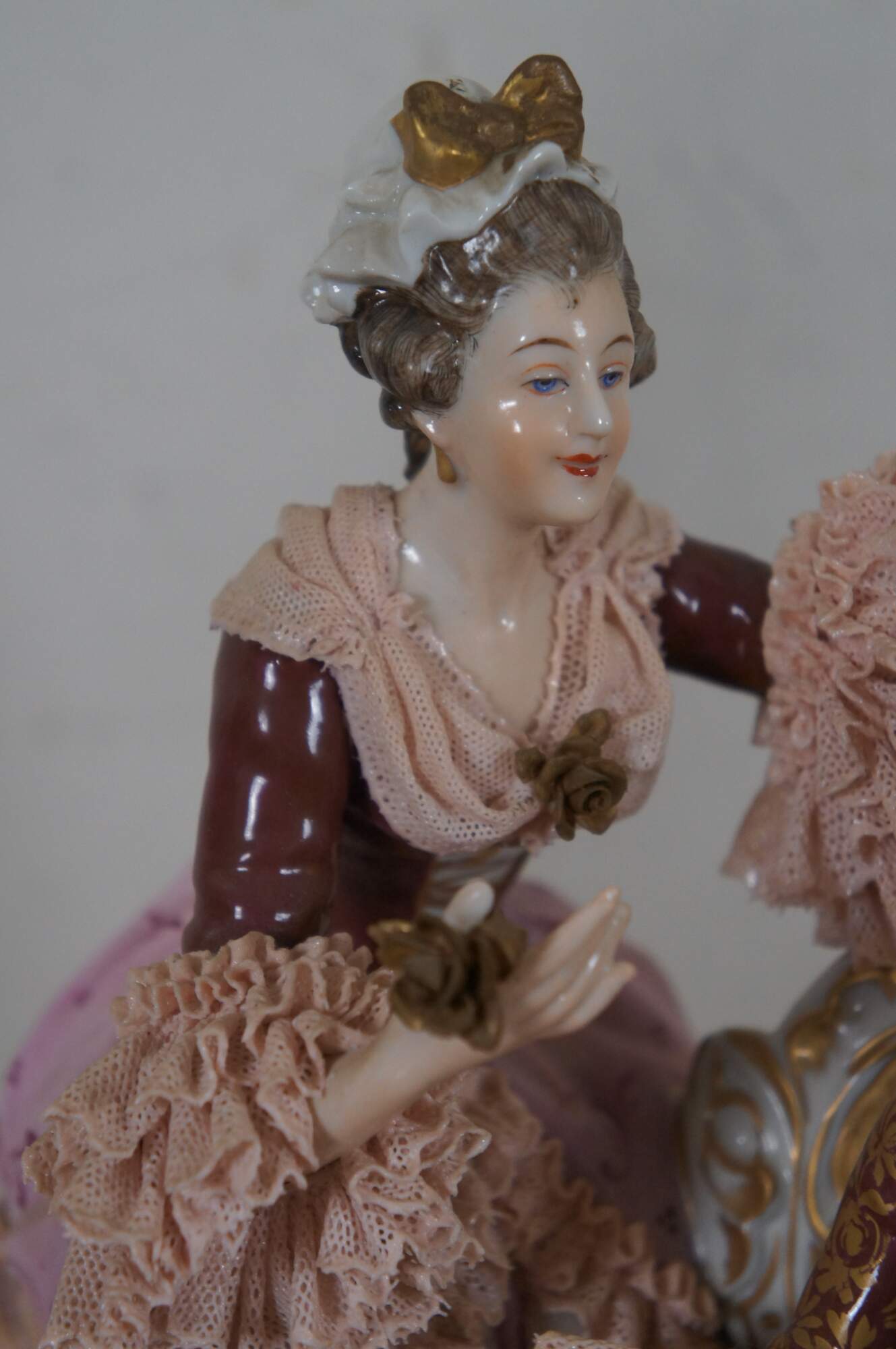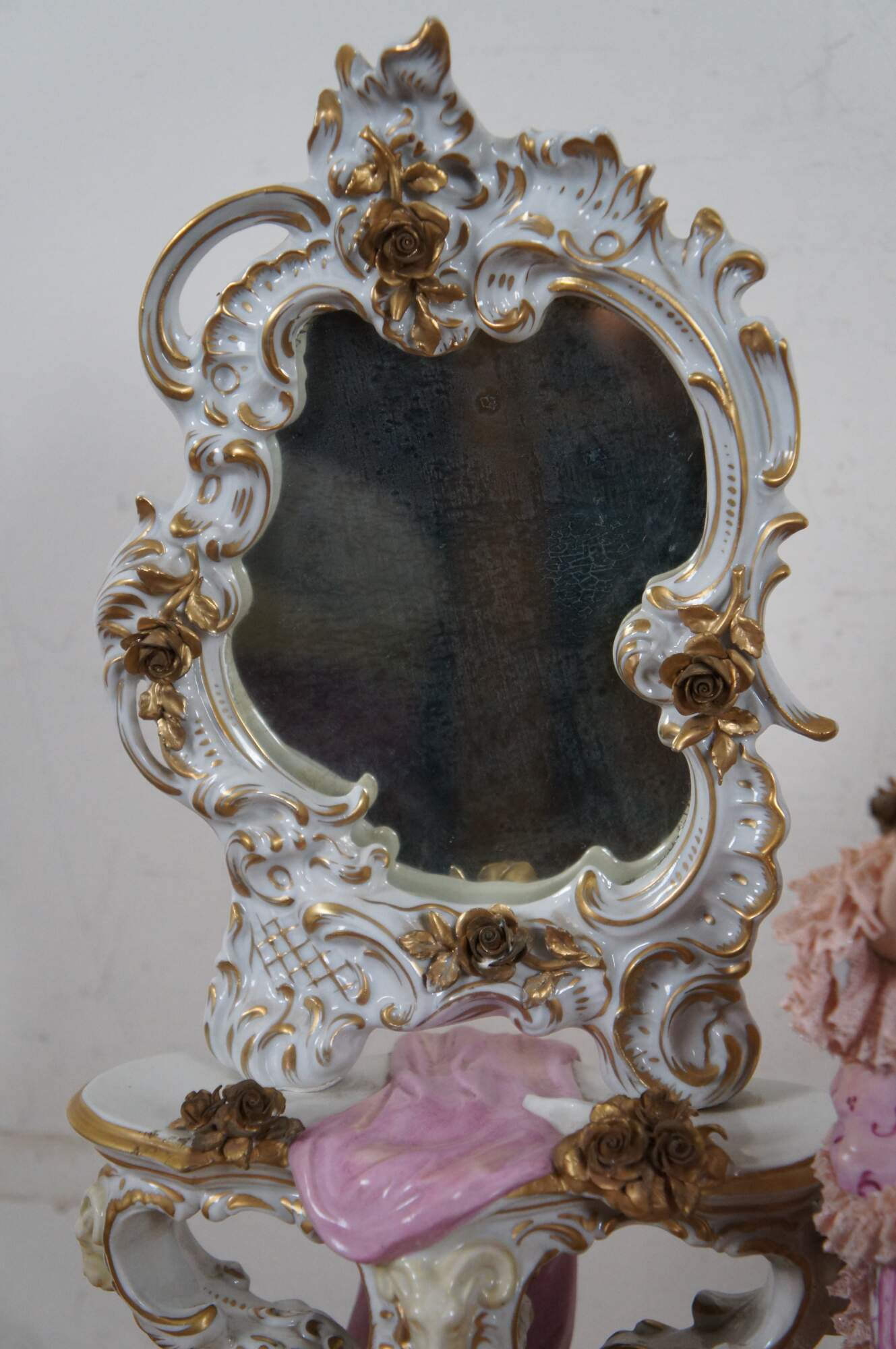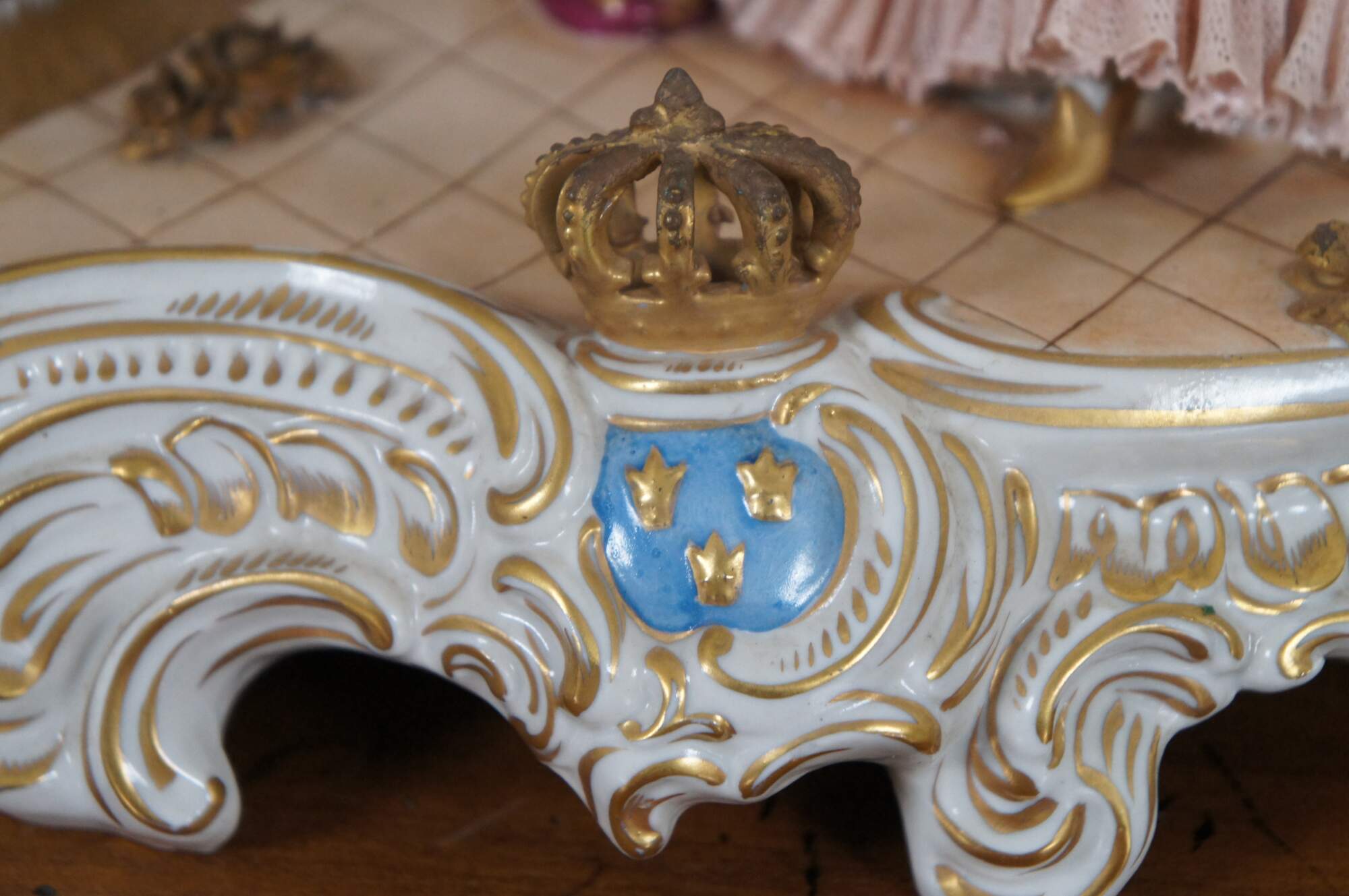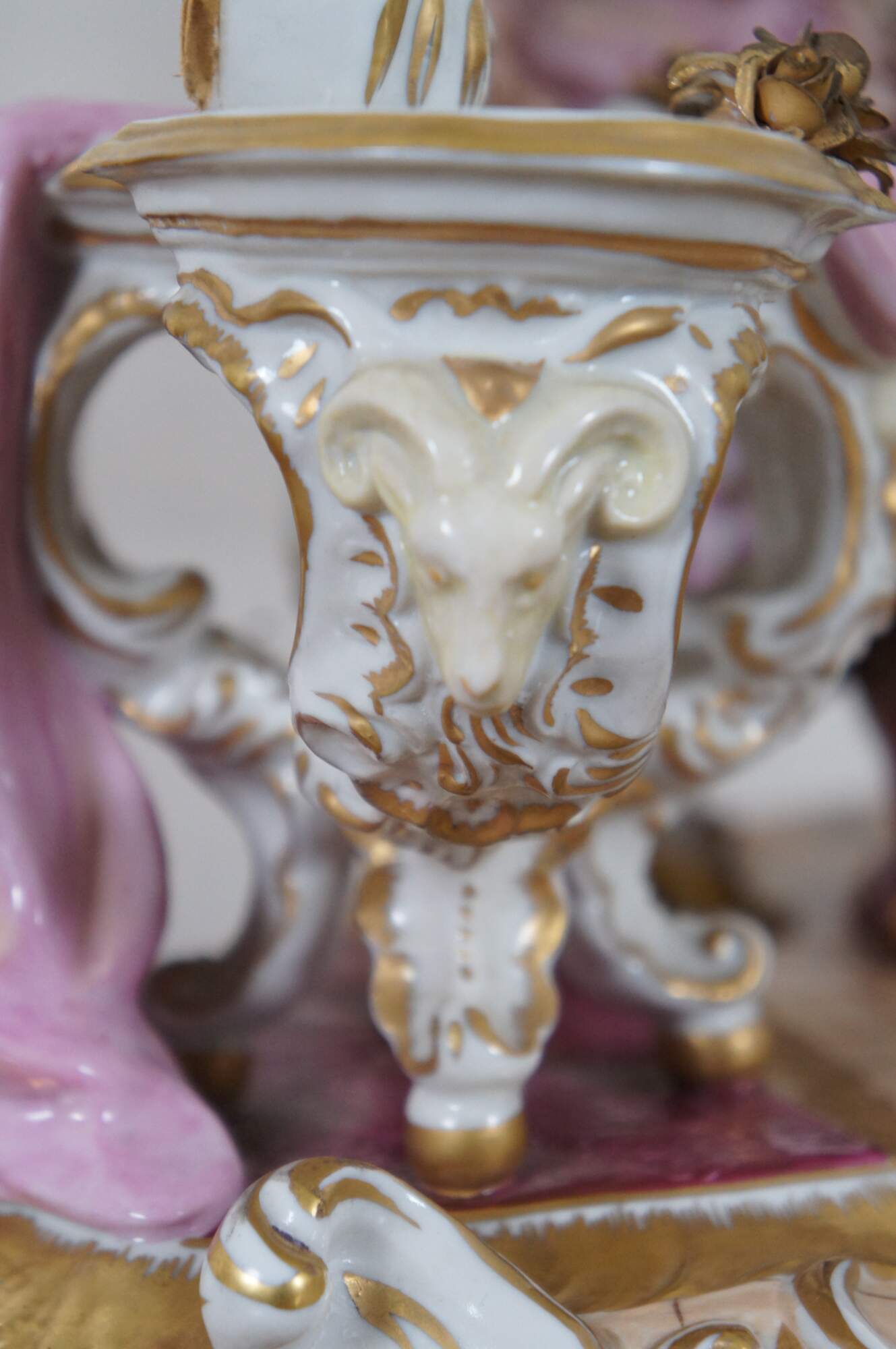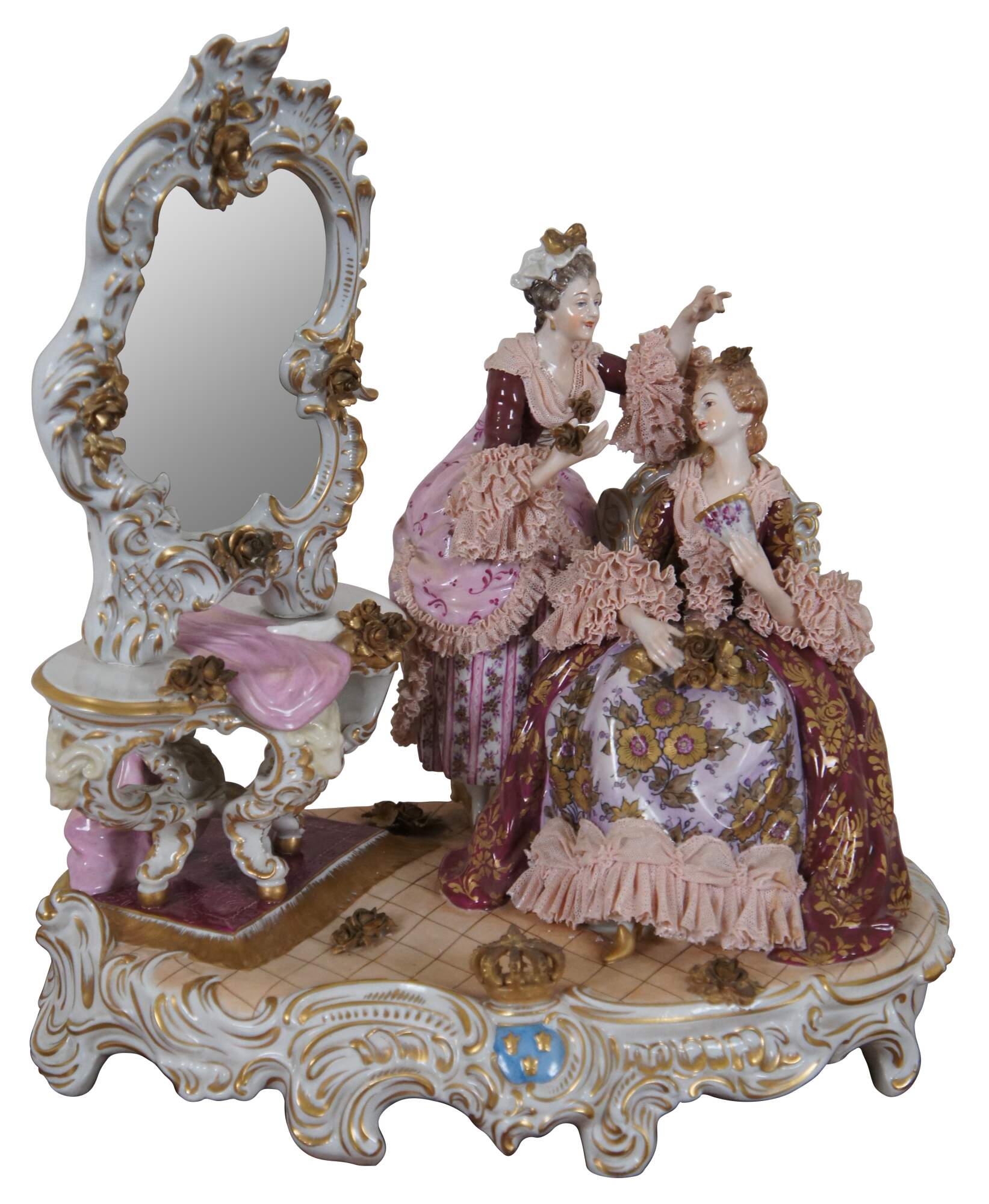
Antique Dresden German Volkstedt Porcelain Lace Group Ladies Vanity Dressing 16"
Sold
Shipping:
Free Shipping Included
Delivery:
Estimated 2-15 Business Days
Payments:
Credit Card, Check, Cash, PayPal, Apple Pay, Venmo
Returns:
30 Days 100% Money Back Guarantee, Buyer Pays Return Shipping
Description
Antique 1800s Volkstedt Dresden porcelain figure group showing a noble woman dressing with her maid in front of a rococo mirrored vanity, dressed in burgundy and gold with flounces of pink porcelain lace and golden applied flowers. ""Volkstedt porcelain manufactory sited in Rudolstadt, Thuringia, Germany, was the earliest porcelain manufactory in Thuringia.[1] It was in business as Aelteste Volkstedter Porzellanmanufaktur, the ""Oldest Volkstedt Porcelain Manufactory"", which was integrated into the VEB Vereinigte Zierporzellanwerke Lichte, which in turn formed part of the Kombinat Feinkeramik Kahla.[2]
The factory had its origins in an official request made 8 September 1760 by the porcelain maker Georg Heinrich Macheleid (1723 -1801). Macheleid had long worked in the glass manufactory at Glücksthal and had gained the arcana of porcelain-making by his own researches, apparently independent of Ehrenfried Walther von Tschirnhaus and Johann Friedrich Böttger, the ceramists at Meissen. He wished to open a privileged porcelain factory, making true hard-paste porcelain, intended to be sited in Sitzendorf.[3] In 1762 the privilege was granted by Johann Friederich, Fürst von Schwarzburg-Rudolstadt, a great patron of the arts and music, specifying that the manufactory was to be set up near his princely court of Schwarzburg-Rudolstadt, under his personal direction.
Volkstedt gained a reputation for its finely painted and carefully modeled porcelain figures that it holds for collectors today.
In 1797 Ernest Constantine, Landgrave of Hesse-Philippsthal, acquired the porcelain manufactory in Volkstedt, which he sold two years later. Following the reunification of Germany, in 2006/07 the factory buildings were restored to their 18th-century appearance and opened to the public.
During the 19th century the manufactory attracted subsidiary and rival workshops in Rudolstadt: they included Beyer & Bock, Karl Ens, Kämmer & Kramer, Ernst Bohne Söhne, Műller & Hammer."" ""The history of porcelain manufacturing in German Thuringia started in 1762. This year Georg Heinrich Macheleid approached the Prince of Schwarzburg-Rudolstadt. He was granted the exclusive privilege to build a porcelain factory. In 1767 it was leased to Christian Nun. In 1797 the manufactory was purchased by prince Ernst Constantin von Hessen-Philippsthal. Two years later Wilhelm Greiner and Karl Holzapfel bought the factory.
At the end of the 18th century the manufacture was already known throughout Europe and among others products offered 95 different types of figurines. The Volkstedt factory is the best known for its lace figurines that started to be produced by the mid-nineteenth century.
In 1832 the factory lost its exclusive privilege. Other porcelain manufacturers appeared in Volkstedt and nearby region. Next changes of ownership were: 1815-60 Greiner, Stauch & Co., 1861-75 Macheleid, Triebner & Co.
In 1899, the factory became a stock company. The name was changed to Aelteste Volkstedter Porzellanfabrik AG. After the WWII, the manufactory was transferred to the VEB Zierporzellanwerke Lichte as the VEB Aelteste Volkstedter Porzellanmanufaktur. Now it is a part of the Seltmann Weiden group.
The crossed pitchforks were the factory mark from 1760. Around 1800 was added ""R"" as Rudolstadt. Later, in the 19th century a mark was single pitchfork with sun. At the beginning of the 20th century the mark were ""FG"" letters with crown. Latest mark are ""AeV"" letters with crown.""
Condition
Good Overall - Couple of chipped edges of lace
Dimensions
14” x 10” x 15.5” (Width x Depth x Height)
